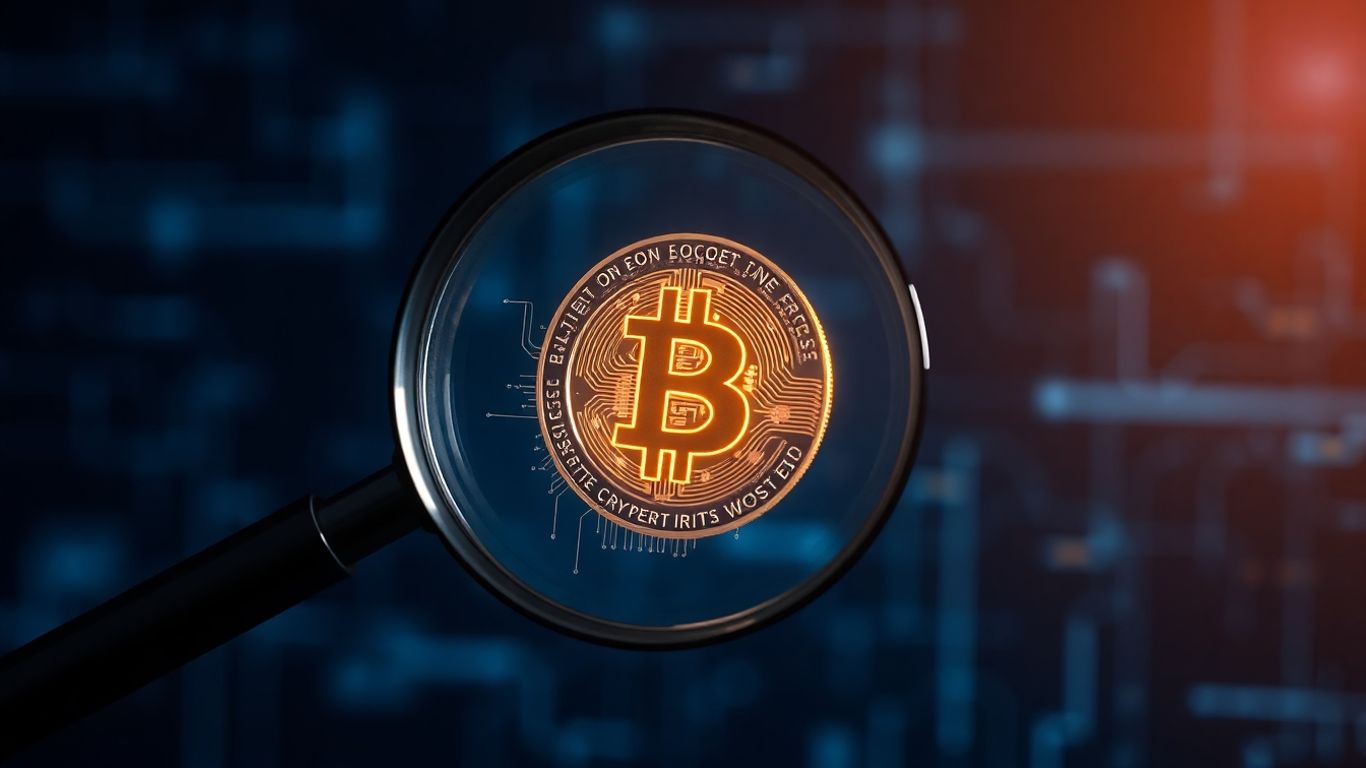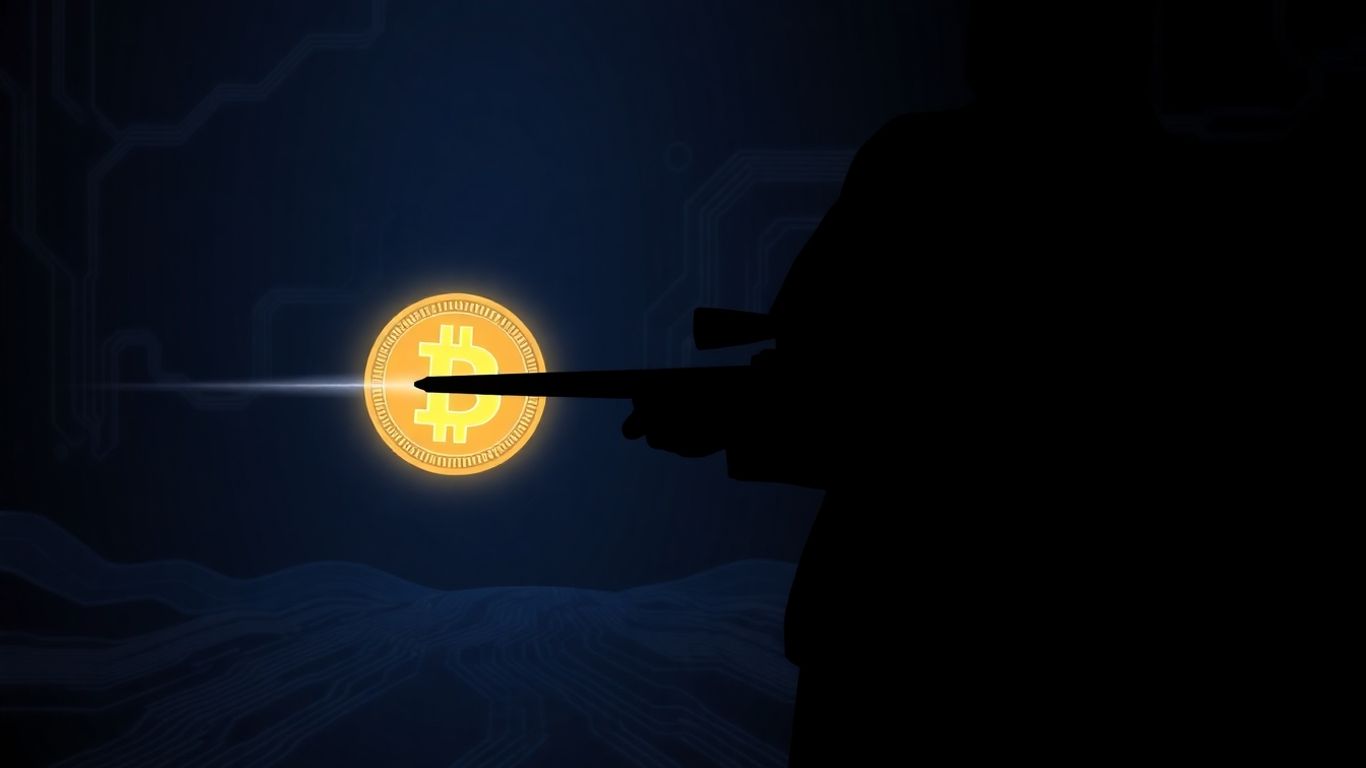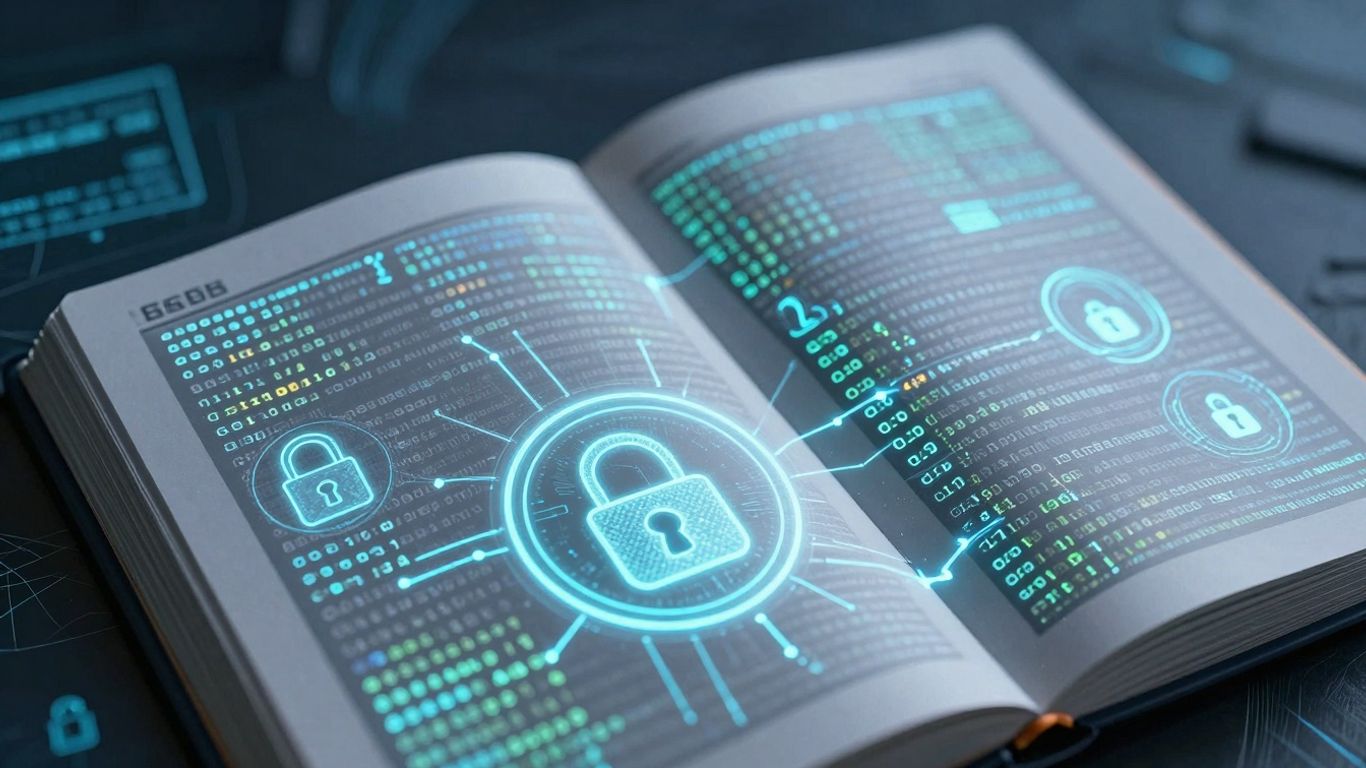[ newsletter ]
Stay ahead of Web3 threats—subscribe to our newsletter for the latest in blockchain security insights and updates.
Thank you! Your submission has been received!
Oops! Something went wrong. Please try again.
Learn what is sniping in crypto with this guide. Understand the allure, risks, tools, and future of crypto sniping.





So, you've heard the term 'sniping' thrown around in crypto circles and are wondering what it's all about. It sounds a bit aggressive, right? Well, in the fast-paced world of digital assets, it kind of is. This guide is going to break down exactly what is sniping in crypto, how it works, and why people do it. We'll also look at the not-so-glamorous side, like the risks involved and what you need to know to stay safe. Let's get into it.

So, what exactly is "sniping" in the crypto world? Think of it like being a super-fast buyer. When a new cryptocurrency token is about to launch or just hit the market, there's often a tiny window where it's available at a really low price before the general public catches on. Sniping is basically trying to grab those tokens during that brief moment. It's all about speed and getting in before anyone else.
Doing this manually is nearly impossible because things move so fast. That's where sniping bots come in. These are automated programs designed to watch for new token listings. Once a token goes live, the bot is programmed to instantly send a transaction to buy it. They're set up to execute trades faster than a human ever could. It’s like having a digital hawk watching the market.
Here's a simplified look at how they work:
The core idea behind sniping is to exploit the initial moments of a token's availability. This often happens on decentralized exchanges where new tokens are frequently listed with limited initial trading volume.
Now, this is where things get a bit murky. While sniping itself isn't illegal, it definitely raises eyebrows. Some people see it as a smart way to get ahead, while others think it's unfair. It can create an uneven playing field, especially for smaller investors who don't have access to these fast bots. It's a topic that sparks a lot of debate in crypto communities.
So, why do people bother with crypto sniping? It really boils down to getting in on the ground floor. Imagine finding out about a new project, a really promising one, before anyone else even knows it exists. That's the dream, right? It’s like getting a secret tip about a stock that’s about to explode, but in the crypto world.
Spotting these potential winners isn't always easy. It takes a good amount of research and sometimes just a gut feeling. You're looking for projects with solid teams, a clear use case, and a community that's actually engaged, not just bots. It’s about sifting through the noise to find that one gem. Sometimes, you might look at early stage projects that are still in their development phase, hoping they'll take off.
This is where the "sniping" part really comes in. When a new token launches, especially on decentralized exchanges, there's often a small window where the price is incredibly low before it gets swamped by buyers. Sniping is all about being lightning fast to grab those tokens at that initial, low price. It’s a race against time, and often, against other snipers too.
The main draw is the possibility of making serious money. If you manage to buy a token for pennies and it later becomes worth dollars, the return on investment can be astronomical. It’s not guaranteed, of course. A lot can go wrong. But the allure of that massive payday is what drives many to try their hand at sniping.
Here’s a simplified look at the potential:
It’s important to remember that this kind of outcome is the best-case scenario. Many tokens don't reach these heights, and some end up being worthless.
Getting in early is the name of the game for many in the crypto space. It’s a high-risk, high-reward strategy that appeals to those looking for significant gains, but it definitely comes with its own set of challenges.

Sniping in crypto, while tempting, isn't exactly a walk in the park. It comes with its own set of headaches and potential pitfalls that anyone looking to jump in should be aware of. It's not all sunshine and instant profits, you know.
This is a big one, and honestly, it's pretty scary. A 'rug pull' happens when the creators of a new crypto project suddenly disappear, taking all the invested money with them. They hype up a token, get people to buy in, and then just vanish. It's like someone pulling the rug out from under your feet, leaving you with worthless digital tokens. Because the crypto space is still pretty wild west, especially with new, unproven projects, it's easier for these scams to happen. You might think you're getting in on the ground floor of the next big thing, but it could just be a well-disguised trap.
Cryptocurrencies are known for their wild price swings. One minute a token is up, the next it's down. When you're sniping, you're trying to get in and out super fast. But this speed can work against you. 'Slippage' is when the price you expect to buy or sell at is different from the actual price you get. This can happen because the market moved too quickly between the time you placed your order and when it was executed. For snipers, even a small slippage can eat into potential profits or turn a small gain into a loss. Imagine you set a limit order to buy a token at $1, but by the time your order goes through, it's already $1.10. That extra 10 cents per token adds up, especially if you're buying a lot.
Many people use bots to snipe tokens because doing it manually is just too slow. But these bots aren't perfect. They can be complex to set up and maintain. Sometimes, the bot might not execute the trade correctly, or it might get stuck. Network congestion on the blockchain can also cause delays, meaning your bot misses the window of opportunity. There's also the risk of the bot interacting with a malicious smart contract, which could drain your wallet. It's a constant battle to keep your sniping tools updated and running smoothly, and even then, things can go wrong.
Here are some common issues:
Sniping requires a certain level of technical know-how. You're not just clicking a button; you're often dealing with code, network conditions, and the intricate workings of decentralized finance. If you're not comfortable with that, it's probably not the best strategy for you.
So, you're looking to get into crypto sniping, huh? It's not just about having a fast internet connection, though that helps. You need the right gear and know-how to even stand a chance. Think of it like being a detective, but instead of clues, you're looking at blockchain data, and instead of a magnifying glass, you've got specialized software.
First off, you'll want to get friendly with blockchain explorers. These are basically websites that let you see everything happening on a blockchain, like Etherscan for Ethereum or Solscan for Solana. They're super useful for watching new token deployments. You can see when a contract is created, who deployed it, and sometimes even initial transactions. It's like having a live feed of the crypto world. You can set up alerts for new contract creations on specific networks, which is a big help.
Here's a quick rundown of what to look for:
Now, for the real speed demons, there are sniping bots. These are programs designed to automatically buy a token the moment it becomes available, often before regular traders even see it. They can be configured to target specific tokens, set buy limits, and even manage gas fees to ensure your transaction goes through quickly. These bots are the closest thing you'll get to an unfair advantage in the fast-paced world of token launches.
There are different types of bots out there, some you can buy, some you can build yourself if you're technically inclined. They often connect directly to the blockchain network to monitor for new token listings and execute trades.
This is where things get a bit more technical, but it's important. When you snipe a token, you're interacting with its smart contract. You need to understand how these contracts work, especially the functions related to buying and selling. Some contracts might have special rules or delays that can mess with your sniping attempts. Knowing how to read basic smart contract code, or at least understanding the common functions like transfer, approve, and swap, can help you spot potential issues or opportunities. It's all about knowing the rules of the game before you play.
Sniping isn't just about speed; it's about information and precision. You need to know where to look, what tools to use, and how to interact with the underlying technology without making costly mistakes. It's a game of inches, and the right tools make all the difference.
Okay, so let's talk about the rules, or lack thereof, when it comes to crypto sniping. It's a bit of a wild west out there, and things are always changing. The regulatory environment for cryptocurrencies is still very much a work in progress. Different countries are trying to figure out how to handle this new digital frontier, and what's allowed today might be different tomorrow.
Right now, there isn't a single, clear set of rules that applies everywhere. Some places are embracing crypto, while others are putting up roadblocks. This uncertainty can make it tricky for anyone involved in activities like sniping. You might be doing something that's perfectly fine in one jurisdiction but could land you in hot water somewhere else. It's like trying to play a game where the rules keep changing mid-play.
The speed at which crypto markets move, combined with the pseudonymous nature of many transactions, presents unique challenges for regulators trying to keep pace and enforce existing frameworks. This often leads to a reactive rather than proactive approach.
If you're not careful, you could face some serious consequences. Depending on where you are and what exactly you're doing, this could include hefty fines, legal battles, or even having your assets frozen. It’s not just about breaking a specific crypto law; sometimes, actions related to sniping could fall under broader financial regulations, like those concerning market manipulation or insider trading, even if it doesn't look like traditional stock trading. The SEC and FINRA, for instance, are looking into market movements that seem tied to crypto treasury disclosures, hinting at potential overlaps with traditional finance investigations into stock movements.
So, what's a snip-happy trader to do? The best bet is to stay informed and act with caution. Always do your homework on the specific regulations in your region. Understand the risks involved, not just the potential rewards. Think about the long-term implications of your actions. It’s about being smart and playing within the lines, as much as those lines are defined right now. Being aware of the potential for market manipulation is also key, even if it's not explicitly illegal in every context.
Here are a few things to keep in mind:
So, what's next for crypto sniping? Well, the bots are getting smarter, that's for sure. We're seeing more sophisticated algorithms that can analyze market trends and smart contract code way faster than a human ever could. Think AI-powered bots that can predict token pumps before they even happen, or bots that can automatically adjust their strategies based on real-time network activity. It's not just about speed anymore; it's about intelligence. These advanced bots might even start to identify potential rug pulls by analyzing contract ownership and liquidity lock-up periods.
Decentralized Exchanges (DEXs) are where most of this sniping action happens, and they're not standing still. Expect DEXs to evolve with features that might make sniping harder, or perhaps, more transparent. Maybe we'll see built-in anti-bot measures or new ways to launch tokens that are less susceptible to rapid price manipulation. On the flip side, DEXs could also offer more tools for legitimate traders to participate in early token sales without needing a bot, leveling the playing field a bit.
It's hard to say exactly how sniping will change the crypto market, but it's definitely going to have an impact. As bots get better, the window for manual sniping shrinks. This could lead to more professionalized sniping operations, or it might push more people towards long-term investing. We might also see new types of tokens emerge that are designed to be resistant to sniping tactics. It's a constant cat-and-mouse game between the developers, the traders, and the bots themselves.
The speed at which new tokens launch and gain traction is only increasing. This rapid pace means that opportunities, and risks, are amplified. Understanding the tools and techniques, while being aware of the evolving landscape, is key for anyone looking to participate in this part of the crypto world.
So, we've gone over what sniping in crypto is all about. It's a pretty wild world out there, and understanding these kinds of tactics is key if you're planning to jump in. It's not exactly simple, and there's definitely a learning curve involved. Remember, this stuff moves fast, and what works today might not work tomorrow. Keep learning, stay safe, and don't put all your eggs in one basket, okay?
Imagine you're trying to buy a super popular toy right when it comes out, but there are tons of people trying to get it too. In crypto, 'sniping' is like using a super-fast robot (a bot) to grab a new digital coin or token the very second it becomes available for trading, often before most people even know it exists. It's all about being the quickest to get in.
These bots are like super-speedy shoppers. They watch the crypto markets constantly. When a new coin is about to be listed or traded, the bot is programmed to send an order to buy it instantly. It's all done through computer code, making it way faster than a human could ever be.
The main reason is to make money! If you can buy a coin when it's brand new and super cheap, and then sell it later when more people want it and the price goes up, you can make a lot of profit. It's like buying something at a garage sale and selling it for a fortune at an auction.
Oh yes, it's very risky! Sometimes, the new coins people are trying to snipe are scams, called 'rug pulls,' where the creators disappear with everyone's money. Also, the price of crypto can change super fast, so you might end up paying way more than you planned, or the coin could become worthless really quickly.
The rules for crypto are still being figured out, like a new game with changing rules. While sniping itself isn't always illegal, using bots might go against the rules of some trading platforms. Plus, if a bot is used to scam people, that's definitely against the law. It's important to be careful and understand what you're doing.
People often use special software called 'sniping bots' that are designed for this. They also use tools that let them see what's happening on the blockchain (like a public ledger) to spot new coins early. Understanding how the underlying code of these coins (smart contracts) works is also key to being a good sniper.


